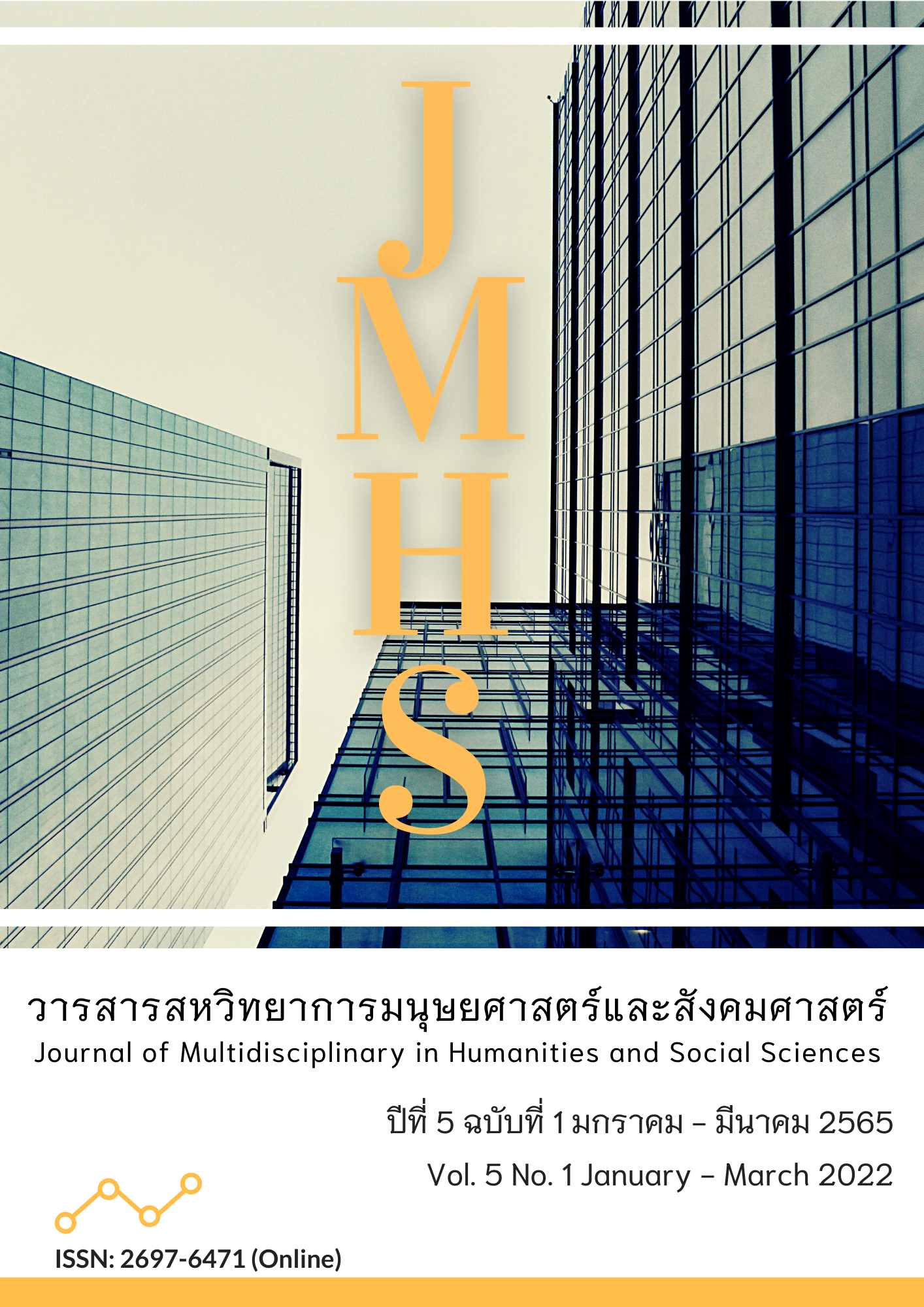A Study of Vipassana Practice Based on A Noble Eightfold Path Appearing in Asivisopamasutta
Main Article Content
Abstract
The purpose of this study had two objectives: to study vipassana meditation in Theravada Buddhist scriptures and to study vipassana meditation according to the Noble Eightfold Path in the Asivasopama Sutta. By studying the data from Theravada Buddhist scriptures, including the Tipitaka Commentary and Vipassana Bhavana. It is a method for developing the mind to achieve intuition and know the truth, which is the trinity, which will lead to the enlightenment of the Noble Truth until attaining the Noble Path. The practitioner must determine the knowledge of the six senses. To develop introspection, one must know the true emotions, divided into form and name. namely, vanity, dukkha, anatta, including the five senses, 12 elements, 18 organic matter, 22 noble truths, 4 paccasamupbats, 12 introspections, or known as Vipassana meditation and Vipassana practice are necessary to define these dharmas. It is the determination of individual emotions that are present, any dharma conditions that arise immediately.
To determine that dharma state, or if there is a dharma state occurring at the same time, to determine the emotions that appear clearly; the practice of introspection and meditation according to the Noble Eightfold Path in the souls The Visopama Sutta, which is the noble path of the Ariyas, is the way to success and is sometimes called the Eightfold Path, which is a very important teaching in Buddhism. Whoever practices it will bring peace of mind and can lead to the cessation of all suffering. It is a process of practice. All dharma is abbreviated into the three principles of morality, concentration, and wisdom. It is called the Dukkha Nirodha Kamini Prathap, which gives rise to wisdom that eventually leads to the attainment of wonderful virtues.
Article Details

This work is licensed under a Creative Commons Attribution-NonCommercial-NoDerivatives 4.0 International License.
Views and opinions appearing in the Journal it is the responsibility of the author of the article, and does not constitute the view and responsibility of the editorial team.
References
พระธรรมกิตติวงศ์ (ทองดี สุรเตโช). (2551). พจนานุกรมเพื่อการศึกษาพุทธศาสน์ คำวัด. กรุงเทพฯ: สถาบันบันลือธรรม.
พระพรหมคุณาภรณ์ (ป.อ. ปยุตฺโต). (2548). พจนานุกรมพุทธศาสตร์ ฉบับประมวลธรรม. (พิมพ์ครั้งที่ 18). กรุงเทพฯ: เอส.อาร์.พริ้นติ้ง แมส โปรดักส์.
พระพรหมคุณาภรณ์ (ป.อ. ปยุตฺโต). (2555). พุทธธรรม ฉบับปรับปรุงและขยายความ. (พิมพ์ครั้งที่ 32), กรุงเทพฯ: ผลิธัมม์.
พระโสภณมหาเถระ (มหาสีสยาดอ). (2549). มหาสติปัฏฐานสูตร ทางสู่พระนิพพาน. (พระคันธสาราภิวงศ์, แปล). กรุงเทพฯ: ไทยรายวันการพิมพ์.
พระโสภณมหาเถระ. (2552). วิปัสสนาชุนี. (จำรูญ ธรรมดา, แปล). กรุงเทพฯ: ประยูรสาส์นไทย การพิมพ์.
พระอุดรคณาธิการ (ชวินทร์ สระคำ) และ จำลอง สารพัดนึก. (2552). พจนานุกรมบาลี-ไทย สำหรับนักศึกษา ฉบับปรับปรุงใหม่. (พิมพ์ครั้งที่ 6). กรุงเทพฯ: ธรรมสาร.
พระอุปติสสเถระ. (2554). วิมุตติมรรค. (พระธรรมโกศาจารย์ (ประยูร ธมฺมจิตฺโต) และคณะ, แปล). (พิมพ์ครั้งที่ 8). กรุงเทพฯ: โรงพิมพ์มหาจุฬาลงกรณราชวิทยาลัย.
มหาจุฬาลงกรณราชวิทยาลัย. (2539). พระไตรปิฎกภาษาไทย ฉบับมหาจุฬาลงกรณราชวิทยาลัย. กรุงเทพฯ: โรงพิมพ์มหาจุฬาลงกรณราชวิทยาลัย.
สมเด็จพระพุทธโฆษาจารย์ (ป.อ. ปยุตฺโต). (2559). พุทธธรรม ฉบับปรับขยาย. (พิมพ์ครั้งที่ 47). กรุงเทพฯ: เพ็ทแอนด์โฮม.
สมเด็จพระพุทธโฆษาจารย์ (ป.อ. ปยุตฺโต). (2560). พจนานุกรมพุทธศาสตร์ ฉบับประมวลธรรม. (พิมพ์ครั้งที่ 39). กรุงเทพฯ: สหธรรมิก.
สมเด็จพระพุทธโฆษาจารย์ (ป.อ. ปยุตฺโต). (2561). พจนานุกรมพุทธศาสน์ ฉบับประมวลศัพท์. (พิมพ์ครั้งที่ 31). กรุงเทพฯ: สหธรรมิก.
สมเด็จพระพุทธชินวงศ์ (สมศักดิ์ อุปสมมหาเถระ). (2554). อริยวังสปฏิปทา ปฏิปทาอันเป็นวงศ์แห่งพระอริยเจ้า. กรุงเทพฯ: ประยูรสาส์นไทย การพิมพ์.
สมเด็จพระมหาสมณเจ้า กรมพระยาวชิรญาณวโรรส. (2541) บาลีไวยากรณ์ วจีวิภาคที่ 2 หลักสูตรตรี. (พิมพ์ครั้งที่ 46). กรุงเทพฯ: มหามกุฏราชวิทยาลัย.


